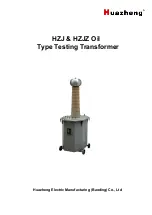
●
If you do not measure 5V at D4 and D5, you have one or both zeners misplaced and are in one of the 1N4148 locations. You will
now have to determine if the correct diode ended up in location D2 or D7 by trial and error. You have a 50-50 chance of picking the
right one first off. Unless of course, both need to be swapped.
●
If you measure 5 volts at D4 and D5, it is now safe to install the Power Output transistor, Q16 (this of course, is the Q16 next to the
power jack at the rear of the board)
Installing Q16:
●
With the board mounted in the case, install the IRF510B MOSFET at the Q16 location.
●
Line up the screw holes and attach with #4 nylon screw and nut.
●
Push the body of Q16 up against the back of the cabinet to slightly kink the leads and ensure it is flush to the case.
●
Top solder the three leads to the pads.
●
Remove board from case and trim back leads on Q16
●
Re-install the board into the case
●
Attach Q16 to cabinet with mica insulator and nylon screw.
●
Use an Ohm meter to verify the metal tab of Q16 IS NOT shorted to the case.
Failure to use mica insulator and nylon screw to attach Q16 will result in a short circuit on DC
input.
Transmitter adjustments:
●
Connect power meter if available and dummy load to antenna jack.
●
Connect amp meter in series with power supply lead, 2 A scale.
●
Re-apply power to the rig.
●
Set the Main tuning to about the center of the tuning range.
●
Key the microphone (or ground PTT) to enable transmitter.
●
Note the current being drawn from the power supply with the amp meter.
●
Slowly turn the “PA BIAS” trimmer resistor clockwise, while watching the amp meter.
●
Stop adjusting the BIAS as soon as the current starts to increase.
●
Back off on the BIAS just enough to put it below the threshold of current increase.
●
Any higher bias can run the risk of PA oscillations with non-resistive loads.
●
Turn the “MODULATION GAIN” trimmer resistor clockwise to about mid position.
●
Activate “TUNE” mode by a short push and release of the PTT switch. (On time less than ½ second)
●
A “Beep” should be heard in the speaker. If not, try again.
●
Pushing and holding closed the PTT switch will now key the transmitter and insert an audio tone as long as the PTT is pushed.
●
Adjust T4 for best power output as indicated by the power meter or brightness of the LED mounted on the board. Typically, this will
be about a ½ to full turn clockwise of the slug in T4.
NOTE: The full power output bandwidth of the rig is fairly narrow, 100 kHz or so. Therefore, peak T4 in the center of your favorite
slice of 75 meters to operate, such as a regional or local net frequency.
14
Manual revised 20160229
Summary of Contents for The Survivor
Page 18: ...18 Manual revised 20160229...





































